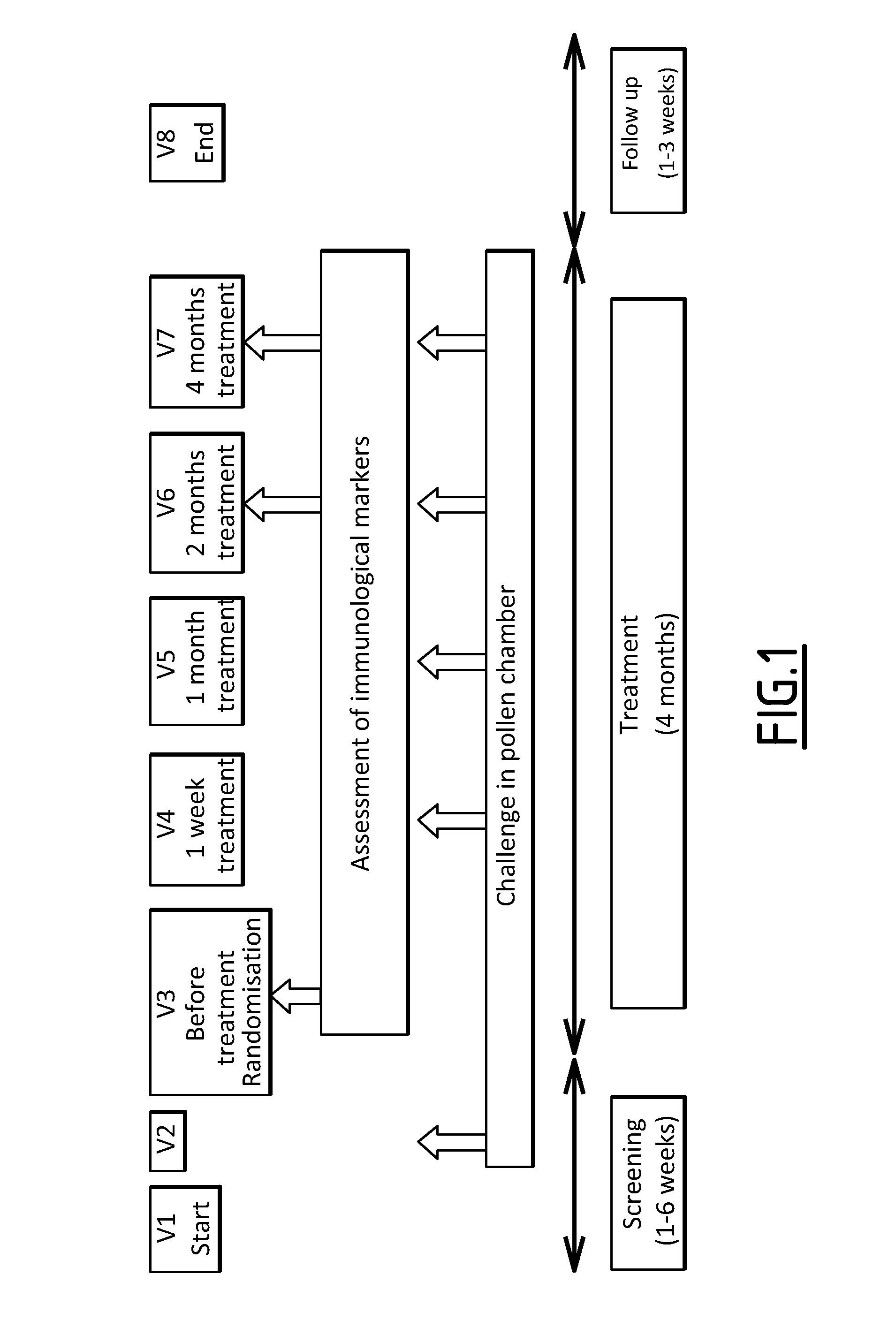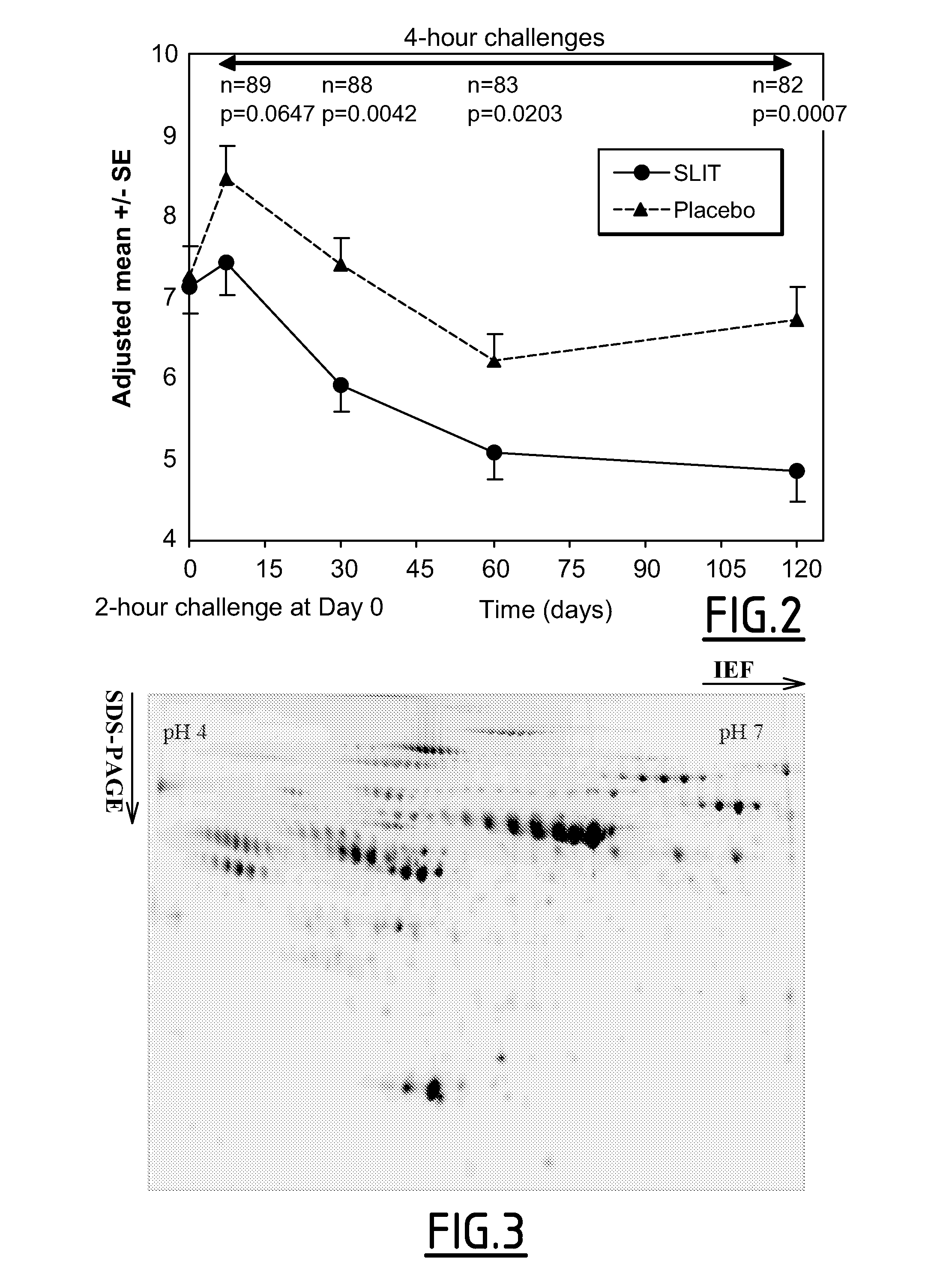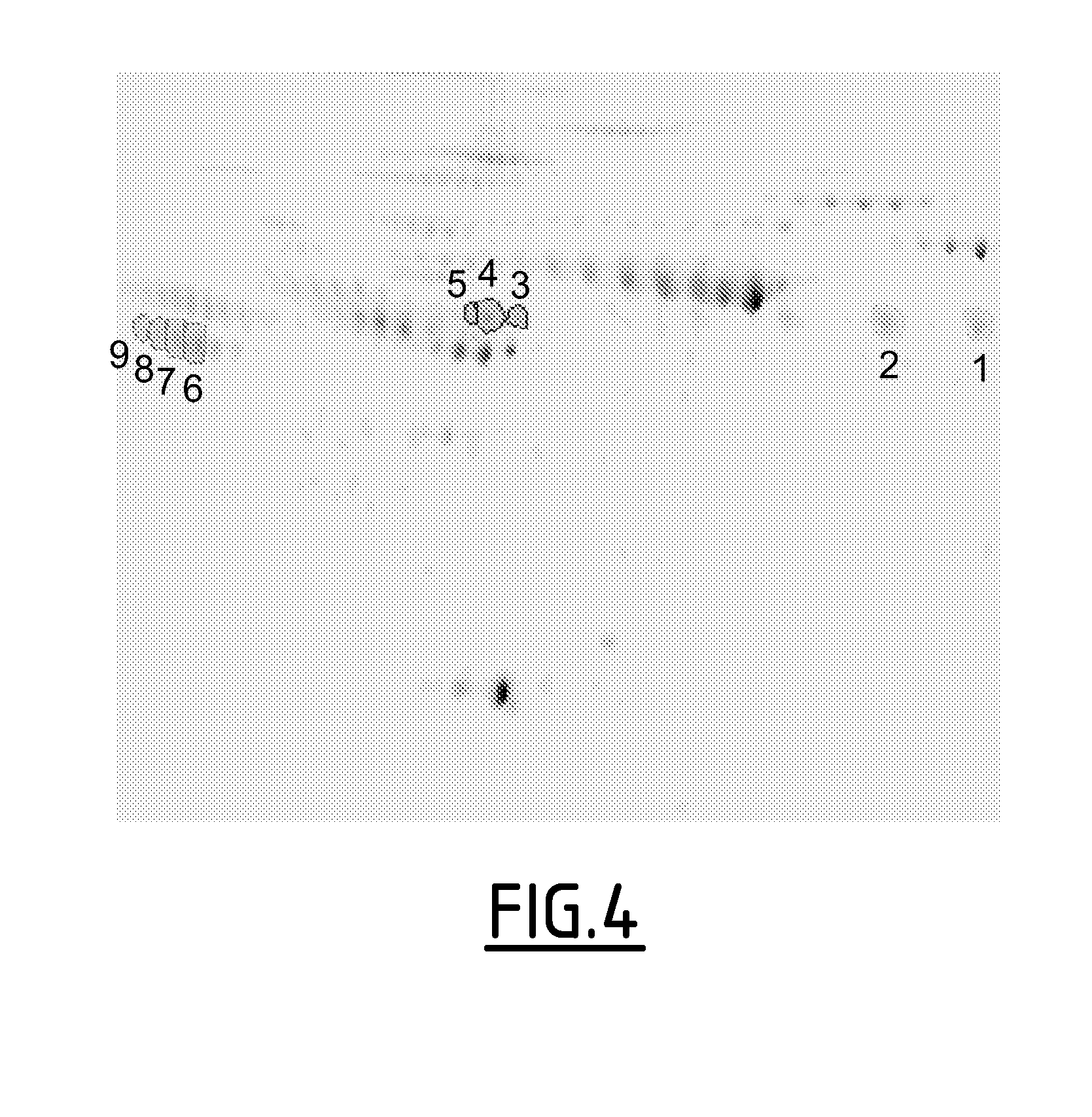Biomarkers of immunotherapy efficacy
a biomarker and immunotherapy technology, applied in the field of biomarkers of immunotherapy efficacy, can solve the problems of difficult or impossible, the cost of treatment remains a major factor in slowing down etc., and achieve the effect of increasing the level of these proteins, facilitating immunotherapy, and facilitating the uptake of sli
- Summary
- Abstract
- Description
- Claims
- Application Information
AI Technical Summary
Benefits of technology
Problems solved by technology
Method used
Image
Examples
example 1
Study Design
[0101]A pharmacodynamic study was conducted to identify biomarkers predictive of SLIT efficacy.
[0102]The clinical protocol of the study was described in Horak F et al. (J Allergy Clin Immunol 2009; 124:471-477). The study assessed the efficacy and onset of action of 5-grass-pollen tablets under controlled conditions provided by an allergen challenge chamber (ACC; also known as an environmental exposure unit) to overcome these variations. An ACC is a specially designed room used to expose study participants to a fixed, predetermined allergen concentration for a set period of time. ACCs also allow identical repeated exposures and thus assessment of changes over time in an individual's response.
[0103]Briefly, patients eligible were men and women aged between 18 and 50 years with a documented history of moderate-to-severe seasonal grass pollen-related allergic rhinoconjunctivitis for at least the 2 previous pollen seasons. At screening, patients were required to demonstrate ...
example 2
Definition of Clinical Responders
[0107]As shown in FIG. 2, the study demonstrated a statistically significant reduction in clinical symptoms following at least 1 month of treatment for patients receiving the active grass pollen tablet when compared to the group receiving placebo.
[0108]As patients were challenged before treatment (at Visit 2), it was possible to evaluate individual clinical responses by calculating the percentage improvement of Average Rhinoconjunctivitis Total Symptom Score (ARTSS) between the baseline (challenge at V2) and after the last challenge:
(ARTSS at V2−ARTSS at last challenge) / ARTSS at V2×100.
[0109]To analyse potential links between changes in immunological parameters and clinical responses, statistical analyses were pre-defined in the Statistical Analysis Plan (SAP) of the study. The quartiles of % of improvement of ARTSS were calculated for all subjects, active and placebo combined. The third quartile corresponding to at least a 48.9% decrease of ARTSS af...
example 3
Analysis of Serum Protein Profiling by 2D-DiGE
[0110]Materials and Methods
[0111]Protein profiling was performed on sera by 2D-Differential Gel electrophoresis (2D-DiGE), making no assumption on the identity of potential biomarkers. 2D-DiGE is a technology of 2D gel separation of proteins. The first dimension separates the proteins following their IP (isoelectric point) and the second, separates them on their apparent MM (molecular mass).
[0112]In DiGE, proteins are visualized by fluorescence after specific chemical labeling with CyDye (Cy3 or Cy5). Different samples to be compared are labeled with different dyes which enable signal detection at different emission wave lengths. The two compared samples are loaded on the same gel. Moreover, the use on each gel of an internal standard composed of all the samples to be compared, in equal amount and labeled with a third Dye (Cy2) enables a more robust gel analysis.
[0113]Selection of Samples
[0114]Serum samples from 36 patients, collected be...
PUM
| Property | Measurement | Unit |
|---|---|---|
| molecular mass | aaaaa | aaaaa |
| molecular mass | aaaaa | aaaaa |
| voltage | aaaaa | aaaaa |
Abstract
Description
Claims
Application Information
 Login to View More
Login to View More - R&D
- Intellectual Property
- Life Sciences
- Materials
- Tech Scout
- Unparalleled Data Quality
- Higher Quality Content
- 60% Fewer Hallucinations
Browse by: Latest US Patents, China's latest patents, Technical Efficacy Thesaurus, Application Domain, Technology Topic, Popular Technical Reports.
© 2025 PatSnap. All rights reserved.Legal|Privacy policy|Modern Slavery Act Transparency Statement|Sitemap|About US| Contact US: help@patsnap.com



